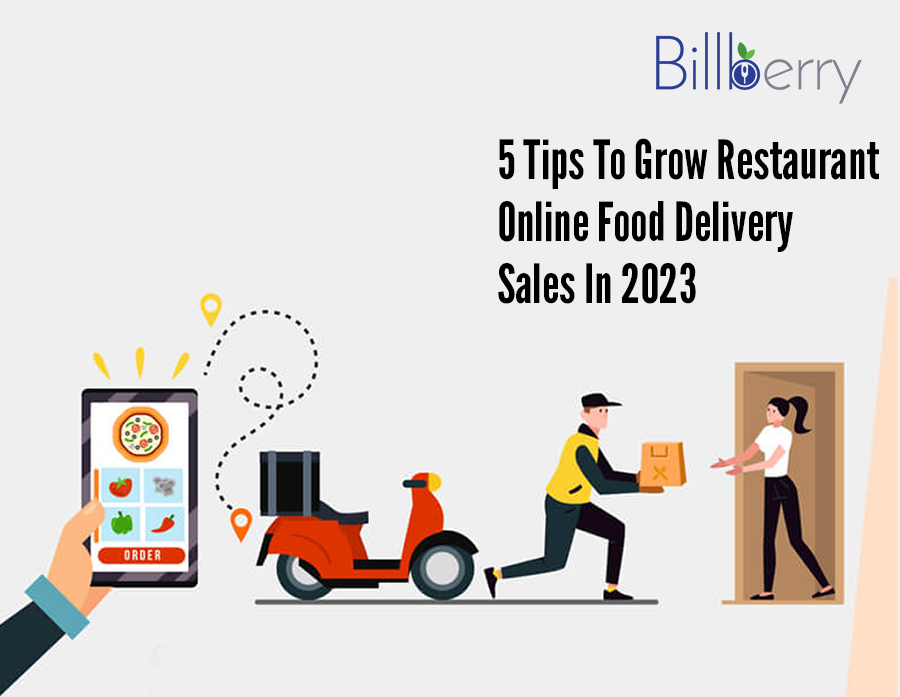The cloud kitchen, virtual kitchen, or ghost kitchen, is a modern food service model that is revolutionizing the way we consume food.
It is a delivery-only concept that allows restaurants to operate without a physical storefront or dining area.
Instead, they rely solely on online orders and delivery services to reach customers, providing a more streamlined and efficient service.
This innovative concept has emerged in response to changing consumer habits, with an increasing number of people turning to online platforms to order food.
In fact, according to a report by Euromonitor International, the global food delivery market is expected to grow at a compound annual growth rate of 9.3% from 2020 to 2025.
Cloud Kitchen POS Software – Free Demo
Cloud kitchens offer several benefits to restaurant operators, including lower overhead costs compared to traditional brick-and-mortar restaurants.
This is because they do not require expensive real estate and restaurant infrastructure, such as a dining area or front-of-house staff.
As a result, cloud kitchens can focus on creating a specialized menu and efficient food preparation processes, resulting in higher profit margins.
How To Run A Successful Cloud Kitchen Business In 2023
In addition, cloud kitchens can also be a shared kitchen space that multiple restaurant operators can use to prepare food for delivery.
This allows for further cost savings and collaboration between different brands.
Overall, the cloud kitchen concept is a rapidly growing trend in the food industry, providing a more streamlined and efficient food service model that caters to the changing needs and preferences of consumers.

Cloud Kitchen POS Software – Free Demo
Why Cloud Kitchen Concept Is Becoming More And More Popular?
The emergence of cloud kitchens, also known as virtual kitchens or ghost kitchens, is a reflection of the rapid changes taking place in the food industry.
This innovative concept has gained widespread popularity for a number of reasons, including the growing demand for online food delivery platforms.
According to a report by Allied Market Research, the global cloud kitchen market size was valued at $43.1 billion in 2019 and is projected to reach $71.4 billion by 2027, growing at a CAGR of 12.0% from 2020 to 2027.
The Journey Of Swiggy and Zomato Logo – Billberry
This underscores the enormous potential of this trend in the food industry.
The growth of online food delivery platforms has been a major driver of the cloud kitchen concept. These platforms have made it easier for customers to order food from a wider variety of restaurants, including those that may not have a physical storefront.
In fact, according to a report by Statista, the global online food delivery market was valued at $107.4 billion in 2019 and is projected to grow to $154.3 billion by 2023.
In addition, cloud kitchens offer several advantages to restaurant operators, including lower overhead costs, increased flexibility, and improved efficiency.
By operating without a physical storefront, cloud kitchens can save on rent, utilities, and other expenses associated with traditional brick-and-mortar restaurants.
This allows them to focus on creating a specialized menu and efficient food preparation processes, resulting in higher profit margins.
Future Of Restaurants With The Elements Of Augmented Reality In Restaurant Menus
Moreover, cloud kitchens can also be a shared kitchen space that multiple restaurant operators can use to prepare food for delivery.
This provides opportunities for collaboration and cost-sharing, which can benefit both established and emerging food businesses.
Overall, the cloud kitchen concept is rapidly transforming the food industry, providing a more flexible and efficient service model that is aligned with the changing needs and preferences of consumers.
By operating a cloud kitchen, it becomes easier than ever to grow online food delivery sales because of the added convenience to customer experience and exceptional benefits for the restaurateur.
The rise of food delivery apps has been a significant factor in the success of the cloud kitchen concept.
These apps have made it possible for cloud kitchens to reach a much broader customer base, without the need to invest in expensive real estate and other costs associated with traditional brick-and-mortar restaurants.
According to a report by Edison Trends, food delivery apps have seen a surge in popularity in recent years, with a 125% increase in consumer spending on food delivery services from 2016 to 2020.
In addition, the COVID-19 pandemic has accelerated the growth of food delivery apps, with many consumers opting for contactless delivery options.
This shift towards online ordering and delivery has created new opportunities for restaurants, particularly those operating in the cloud kitchen space.
By leveraging the power of food delivery apps, cloud kitchens can reach a wider customer base, without the need to invest in expensive real estate and other costs associated with traditional brick-and-mortar restaurants.
Cloud Kitchen POS Software – Free Demo
Furthermore, the data generated by food delivery apps can provide valuable insights into consumer behavior, preferences, and trends.
By analyzing this data, cloud kitchens can make data-driven decisions about menu offerings, pricing, and other aspects of their business, resulting in a more efficient and profitable operation.
Overall, the rise of food delivery apps has been a game-changer for the food industry, providing new opportunities for cloud kitchens to reach a wider customer base, while also offering valuable insights into consumer behavior and preferences.

The cloud kitchen concept has gained popularity in recent years due to several factors, including the ability to operate more efficiently with lower overhead costs, ultimately leading to higher profit margins.
A report by Euromonitor International notes that cloud kitchens can save up to 50% on rent, utilities, and other expenses compared to traditional restaurants, allowing them to focus on creating a specialized menu and efficient food preparation processes.
In addition to cost savings, the growing consumer demand for convenience has also contributed to the success of the cloud kitchen model. According to a report by McKinsey, the online food delivery market is projected to reach $365 billion by 2030, driven by consumers’ desire for ease and speed of delivery.
This trend has been further accelerated by the COVID-19 pandemic, which has led to a surge in demand for contactless delivery options.
How To Create A Restaurant Management Checklist
Moreover, cloud kitchens have the potential to be more sustainable operations, as they can produce food more efficiently and reduce waste.
By operating on a delivery-only basis, cloud kitchens can optimize their supply chain, reducing the need for excess inventory and minimizing food waste.
In addition, cloud kitchens can use technology to track inventory and monitor food production, allowing them to make more informed decisions about production and reduce waste.
Overall, the cloud kitchen concept has emerged as a viable alternative to traditional restaurants, offering several advantages in terms of cost savings, convenience, and sustainability.
As consumer demand for online food delivery continues to grow, cloud kitchens are poised to play an increasingly important role in the food industry.
Cloud Kitchen POS System – Free Demo
How Cloud Kitchen Concept Works?
The process of ordering from a cloud kitchen typically begins with customers placing an order through a food delivery app or website.
According to a report by McKinsey, the process involves several steps, including order acceptance, kitchen preparation, order packaging, and delivery logistics.
Once the order is placed, it is sent to the cloud kitchen where the food is prepared and packaged for delivery.

Cloud kitchens can operate with lower overhead costs than traditional restaurants, allowing them to focus on creating a specialized menu and efficient food preparation processes.
According to a report by CB Insights, cloud kitchens typically have smaller kitchen spaces, streamlined operations, and lower labor costs, allowing them to operate at a higher profit margin than traditional restaurants.
Additionally, cloud kitchens can leverage technology to manage operations such as inventory management, order tracking, and delivery logistics, further optimizing their efficiency.
The delivery process is a critical aspect of running a successful cloud kitchen business . Cloud kitchens may have their own delivery fleet or outsource the delivery to a third-party delivery service, depending on the business model.
According to a report by TechCrunch, some cloud kitchen operators are partnering with autonomous vehicle companies to explore the potential of using self-driving cars for food delivery, further streamlining the delivery process.
Overall, the cloud kitchen model offers several advantages over traditional restaurants, including lower overhead costs, specialized menus, and streamlined operations.
By leveraging technology and optimizing the delivery process, cloud kitchens can offer a more convenient and efficient food delivery experience to customers.
Cloud Kitchen POS Software – Free Demo
Is Cloud Kitchen Concept The Future?
Cloud kitchens have gained attention from the food service industry for its potential to facilitate aligning food business operations, leading to an efficient and successful food franchise business.
According to a report by Euromonitor International, the global cloud kitchen market is expected to grow at a compound annual growth rate of 12.8% between 2020 and 2025.
This growth is largely attributed to the increasing popularity of online food delivery platforms, which have made it easier for customers to access a wider variety of food options, including those offered by cloud kitchens.

The cost-effectiveness and efficiency of the cloud kitchen model are also significant factors contributing to its potential success.
According to a report by McKinsey, cloud kitchens can operate with 30-50% lower overhead costs than traditional restaurants due to their smaller physical footprint and the ability to focus on specialized menus and streamlined operations.
Restaurant Scent Marketing: A Unique Way To Grow Customer-Base
Additionally, cloud kitchens can leverage technology to manage inventory and order tracking, further optimizing their efficiency.
The COVID-19 pandemic has further accelerated the shift towards cloud kitchens and online food delivery.
With stay-at-home orders and restrictions on dining out, more people turned to online food delivery options, resulting in a surge in demand for cloud kitchens.
As per the National Restaurant Association, 68% of restaurant operators say off-premises sales represent a higher proportion of their total sales now than before the pandemic.
While cloud kitchens may not be the right fit for every restaurant operator or customer, their potential for more sustainable operations may also appeal to consumers who prioritize sustainability.
According to a report by GreenBiz, cloud kitchens have the potential to reduce food waste and energy consumption by producing food more efficiently and effectively managing inventory.
Cloud Kitchen POS System – Free Demo
Who Can Own A Cloud Kitchen?
Cloud kitchens have become a flexible and accessible option for various entities to operate a food business.
According to a report by Euromonitor International, cloud kitchens can be owned and operated by traditional restaurants, food truck operators, caterers, independent chefs and restaurateurs, and even individuals who want to start their own food business.
Established restaurant chains are also leveraging the cloud kitchen concept to expand their reach and increase their revenue streams.
For instance, McDonald’s, KFC, and Starbucks have all opened cloud kitchens in various locations to cater to customers who prefer delivery services.

Furthermore, shared kitchen spaces that are equipped with commercial-grade equipment and infrastructure have become increasingly popular, allowing multiple restaurant operators to lease the space and operate a cloud kitchen without having to make a large initial investment.
Additionally, food delivery companies and aggregators are creating their own cloud kitchen brands and offering delivery-only services.
For instance, Uber Eats launched its virtual restaurant platform, Uber Eats Kitchen, to offer delivery-only menus to customers.
Despite the flexibility and accessibility that cloud kitchens provide, starting and operating a cloud kitchen requires resources and expertise to manage the operation and navigate the complex regulations and logistics involved
Cloud Kitchen POS Software – Free Demo
Technology Used With Cloud Kitchens
Cloud kitchens rely heavily on technology to manage operations and streamline processes. Some of the key technologies used in cloud kitchens include:
Online Ordering And Delivery Platforms
These platforms allow customers to place orders online and track the status of their delivery in real-time. They also provide a way for cloud kitchens to reach a wider customer base and expand their sales.
Cloud Kitchen POS Software
A cloud kitchen POS software helps cloud kitchens manage inventory, track orders, and streamline the food preparation process. They can also help with scheduling, staff management, and other operational tasks.
Automation
Automation technology such as robotic arms, automated packaging machines, and other equipment can be used to increase efficiency, reduce labor costs, and improve the consistency and quality of food.
Temperature Monitoring
Cloud kitchens rely on temperature monitoring systems to ensure that food is stored, prepared and delivered at the right temperatures, which is crucial to maintain the food safety standards.
Data Analytics And Machine Learning
These technologies can be used to analyze data on customer preferences, order patterns, and other factors to optimize operations and improve the customer experience.
The use of technology in cloud kitchen concept not only helps to improve efficiency and reduce costs, but also allows for better tracking and monitoring of food safety, which is crucial for both the restaurant operators and customers.
Benefits Of Cloud Kitchen Concept
There are several benefits of the cloud kitchen concept:
Increased Efficiency And Cost Savings
Cloud kitchens operate with lower overhead costs than traditional brick-and-mortar restaurants, as they do not need to invest in expensive real estate and other costs associated with physical storefronts. This allows them to operate more efficiently and with higher profit margins.
Greater Flexibility For Customers
Cloud kitchens allow customers to place orders online and have their food delivered to them, which offers greater convenience and flexibility.
Specialization
Cloud kitchens can focus on creating a specialized menu and efficient food preparation processes, which allows them to offer unique or niche food options that may not be available at traditional restaurants.
More Sustainable Operations
The cloud kitchen concept can produce food more efficiently and reduce waste, which is becoming an increasingly important consideration for consumers and can help to minimize the environmental impact.
Expansion Opportunities
Cloud kitchens allow restaurants to reach a wider customer base, expand their revenue streams and reach new markets without having to invest in new physical location.
Adaptability
Cloud kitchens are more adaptable to changes in consumer demand, as they can easily pivot their menu or delivery options to meet new trends, thus providing them more flexibility to adjust to market changes.
Conclusion
In conclusion, cloud kitchens represent a growing trend in the food service industry that offers a number of benefits to both restaurant operators and customers.
The concept, which operates solely for the purpose of preparing and delivering food through online platforms, allows for increased efficiency and cost savings, greater flexibility for customers, and the potential for more sustainable operations.

As the popularity of online food delivery platforms continues to grow, it’s likely that we will see more and more cloud kitchens popping up. Nevertheless, it’s clear that cloud kitchen concept is becoming an increasingly important part of the food service industry and will likely play a larger role in the future.
Moreover, this article is written by content experts at Billberry that is a complete ERP solution for Restaurant Business of every type. if you are actively hunting for a complete ERP solution for your Cloud Kitchen, must checkout Billberry. It is an end-to-end solution for every restaurant type!
Cloud Kitchen POS Software – Free Demo




































